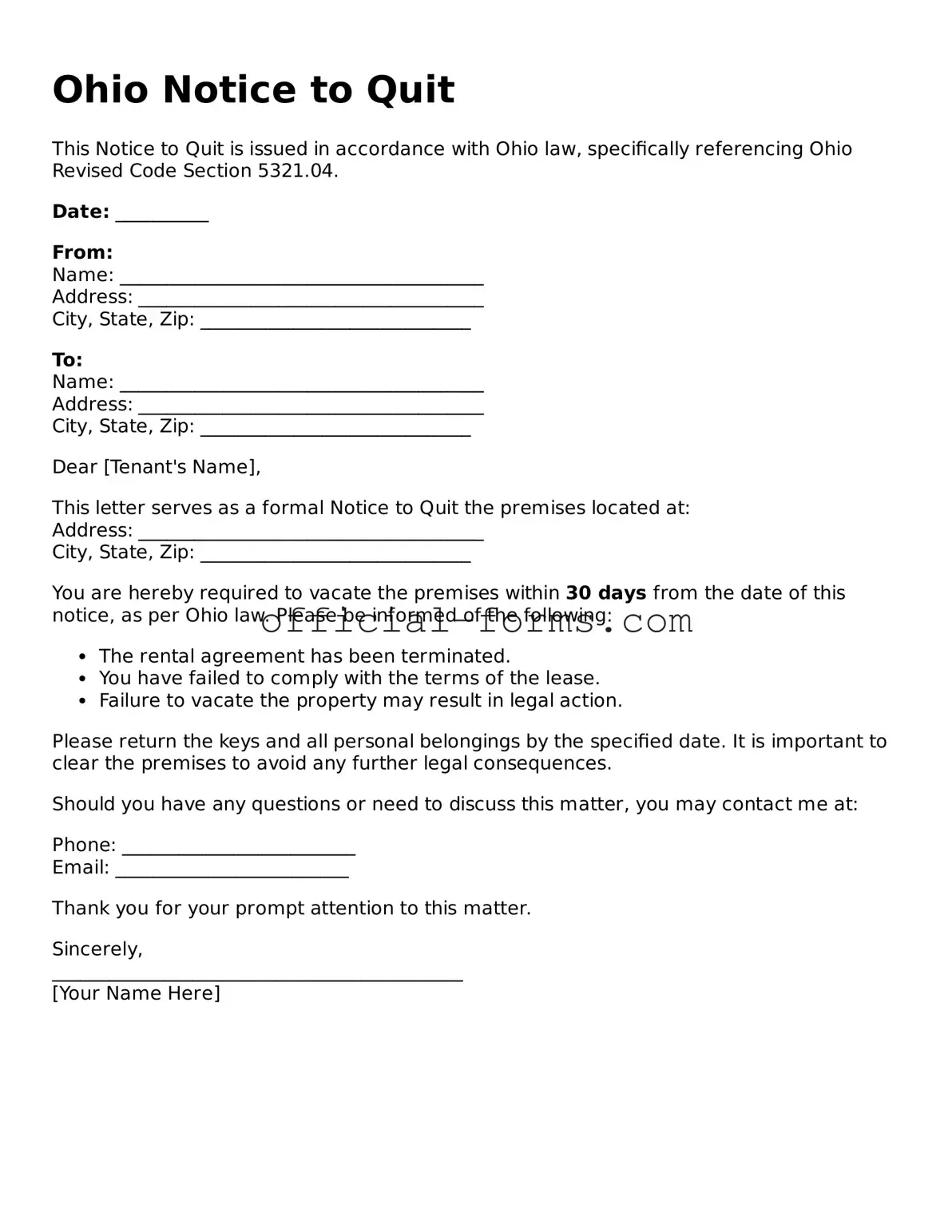Filling out the Ohio Notice to Quit form can be a straightforward process, but many people make common mistakes that can lead to complications. One frequent error is failing to provide accurate tenant information. This includes the tenant's full name and the correct rental address. Incomplete or incorrect details can delay the eviction process.
Another mistake is not specifying the reason for the eviction. Ohio law requires landlords to state the reason clearly, whether it’s non-payment of rent or lease violations. Omitting this information can render the notice ineffective and may require the landlord to start over.
Landlords often overlook the required notice period. In Ohio, the notice period can vary based on the reason for eviction. For example, a 3-day notice is required for non-payment of rent, while a 30-day notice may be necessary for other lease violations. Failing to adhere to these timeframes can lead to legal challenges.
Many individuals also forget to sign and date the Notice to Quit. A signature is essential to validate the document. Without it, the notice may be considered invalid, which can prolong the eviction process unnecessarily.
Another common mistake is not delivering the notice properly. Ohio law outlines specific methods for serving the Notice to Quit, such as personal delivery or certified mail. If the notice is not served according to these guidelines, it may not hold up in court.
Landlords sometimes use outdated forms or templates. Laws and requirements can change, so it is crucial to use the most current version of the Notice to Quit form. Using outdated information can lead to errors that jeopardize the eviction process.
Finally, many people fail to keep a copy of the completed Notice to Quit for their records. Documenting the process is important, as it provides proof of the notice and can be useful if legal issues arise later. Maintaining thorough records can save time and effort in the long run.
